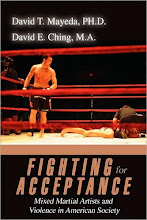 The New York Times has an interesting story up regarding the manga phenomenon in Japan and its highly sexualized content, specifically with regard to portrayals of female minors - "Japan Debates Depictions of Young Girls in Comics."
The New York Times has an interesting story up regarding the manga phenomenon in Japan and its highly sexualized content, specifically with regard to portrayals of female minors - "Japan Debates Depictions of Young Girls in Comics."The article offers some good examples of the way that patriarchy is weaved into Japan's formal social structure, namely, into the law. To put it mildly, manga comics frequently display animated pictures of girls in sexually suggestive situations. The industry is very lucrative, and has a history:
Japan, which has long been relatively tolerant of the open sale and consumption of sexually oriented material, lately has developed a brisk trade in works that in many other countries might be considered child pornography. But now some public officials want to place tighter restrictions on the provocative depictions of young girls — referred to as “junior idols”— that are prevalent in magazines, DVDs and Web videos.
One particularly big target is manga comic books that depict pubescent girls in sexual acts. It a lucrative segment of the $5.5 billion industry for manga, illustrated books drawn in a characteristic Japanese comic-book style.
[...]
Manga taps into a history of erotica that dates at least as far back as the ukiyo-e prints of 17th- to 19th-century Japan, including Hokusai’s famous portrayal of a fisherwoman and octopi in a salacious encounter. But it was as recently as the 1980s that comic magazines like Lemon People introduced a wider audience to sexual manga featuring young girls.
A new law specific to Tokyo's metropolitan government offers very moderate regulation of manga comics, ostensibly in order to prevent child exploitation. However, and unsurprisingly, the law doesn't have a lot of teeth.
The new Tokyo law, which applies to anyone under 18, bans the sale of comics and other works — including novels, DVDs and video games — that depict sexual or violent acts that would violate Japan’s national penal code, as well as sex involving anyone under age 18. The ordinance also requires guardians to prevent children younger than 13 from posing for magazines or videos that depict them in sexually suggestive ways.
Legal experts say that Japan’s laws against child pornography are lax by international standards. Japan has banned the production or distribution of any sexually explicit, nude images of minors since 1999, when Parliament passed a law in response to international criticism of the wide availability of such works in the country. But even now, unlike the United States and most European countries, Japan does not ban the possession of child pornography.
If patriarchy is defined as a system that privileges men over women, then we have a clear example of patriarchy here. Within Japan's current legal structure (at least since 1999) it is completely legal to own child pornography. And while child pornography harms girls and boys, the manga culture appears heavily centered on sexually embellished girls.
To this end, it is argued that the manga culture cultivates values that denigrate girls, increasing their vulnerability to male manga consumers who cannot (or choose not to) separate a patriarchal fantasy from real life experience. The manga culture is said to diffuse into the broader Japanese culture, altering cultural values and norms among males:
Hiromasa Nakai, a spokesman for the Japan Committee for Unicef, said the abundance of child pornography in Japan made it even easier for those who would normally not be considered as having clinical pedophilia, a psychiatric disorder characterized by a sexual obsession with young children, to develop a sexual interest in children.
“To a degree, it has become socially accepted to lust over young girls in Japan,” Mr. Nakai said. “Condoning these works has meant more people have access to them and develop an interest in young girls.”
And this diffusion impacts girls' self-images as well. The article describes a 13-year-old girl and her aspirations, clearly influenced by the manga industry:
“I loved the white bikini,” Ms. Iinuma, the 13-year-old model, told the adult male fans who turned out at the Sofmap electronics store in Tokyo for an event to promote the release of her second DVD, “Developing Now.” It is a plotless 70 minutes of Ms. Iinuma in various costumes and poses.
At the gathering, Ms. Iinuma performed a short dance, spoke about the video shoot, then posed as men approached her to snap photos, while her mother looked on from the back of the room.
Of course those advocating on behalf of the manga industry (or the sector of the industry that is under fire) argue that consumers are mature enough not to have their attitudes and behaviors actually impacted by the media.
The industry’s defenders say comparing manga to pedophilia involving real children is absurd. “Depicting a crime and committing one are two different things; it’s like convicting a mystery writer for murder,” said Takashi Yamaguchi, a Tokyo lawyer and manga expert.
And finally, the industry's economic health is said by some to be more important than wiping out dimensions of patriarchial culture.
Some also worry that stronger regulations will harm an industry whose fortunes have already fallen in recent years; sales of comic magazines, in particular, have dropped by a third over the last decade, to $24.3 million in 2008.
In short, eradicating sexism is not prioritized when placed against free market business ventures. And as noted previously, the society protects this patriarchial culture through the law.
Oh, and this cultural norm has diffused to some degree into American popular culture. Anyone remember the blockbuster film, Kill Bill 2, where we see the intersections of manga-influenced youth, sexism, and violence manifest in this character?


academics








Very well written...;p
ReplyDeleteIt's got nothing to do with patriarchy. It has to do with child abuse. Stop injecting feminist dogma into what is a child welfare issue.
ReplyDelete